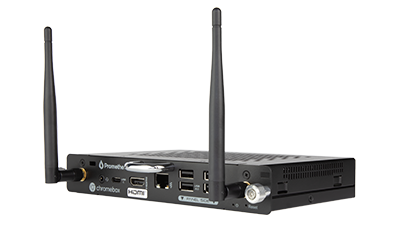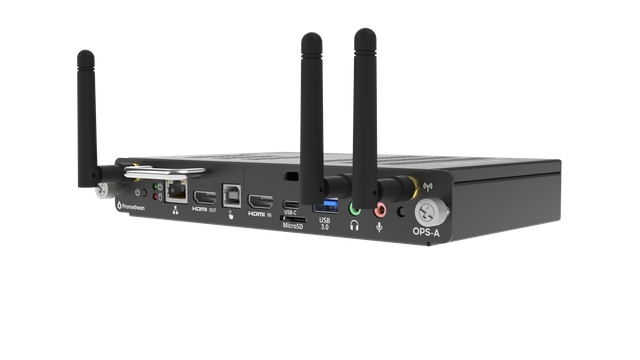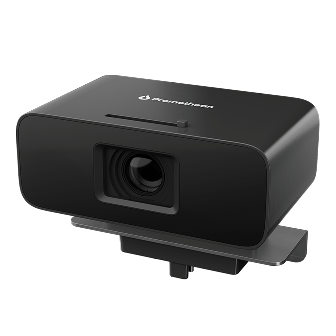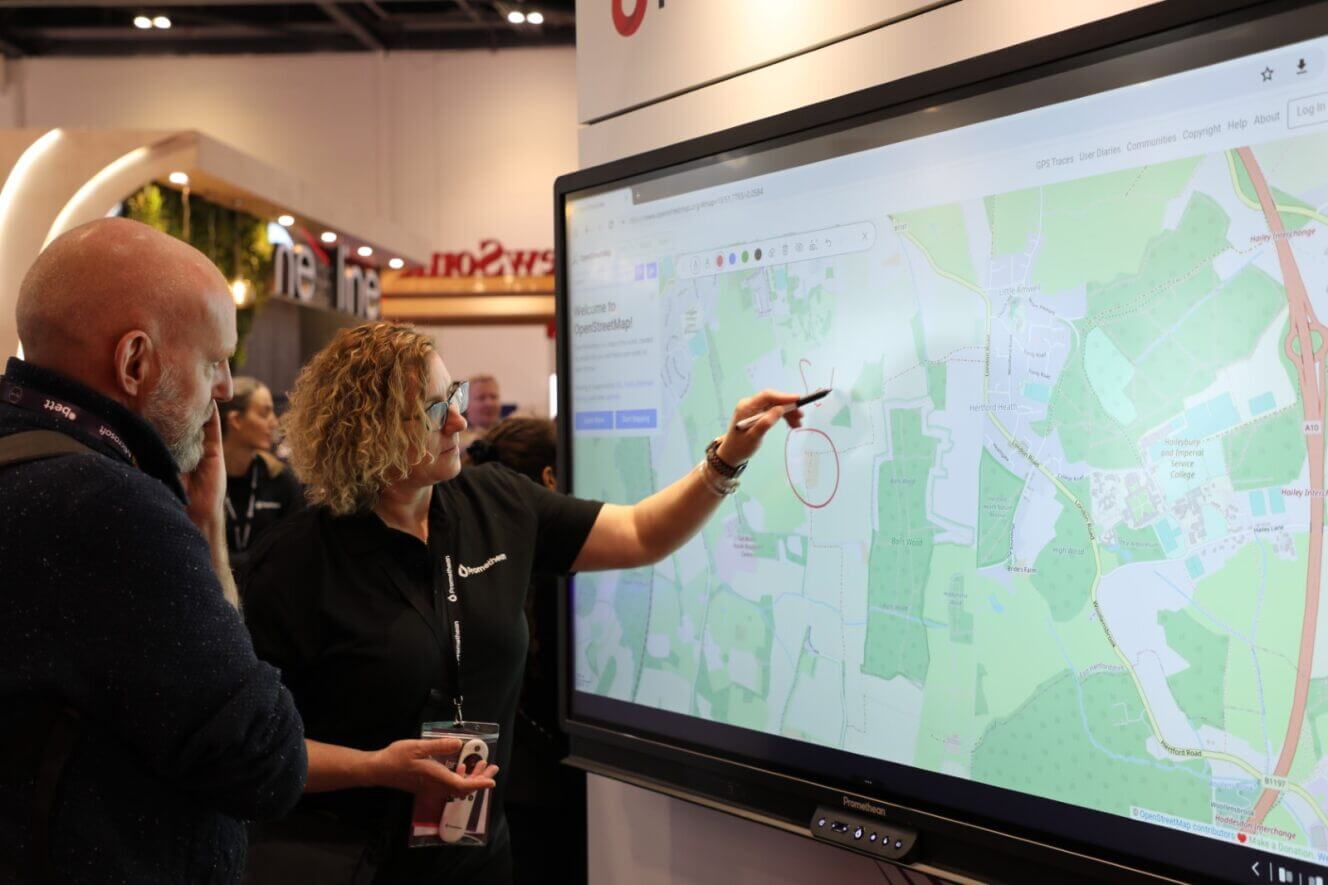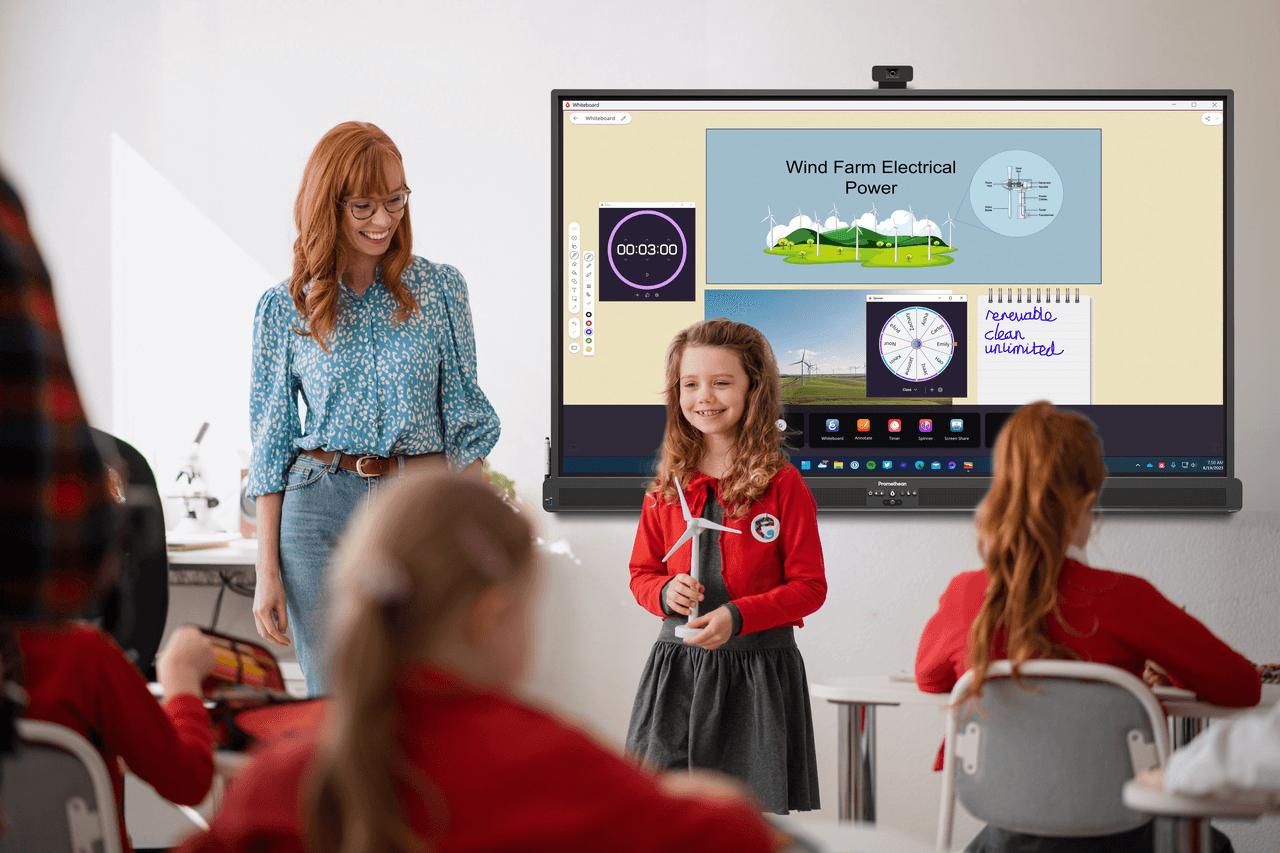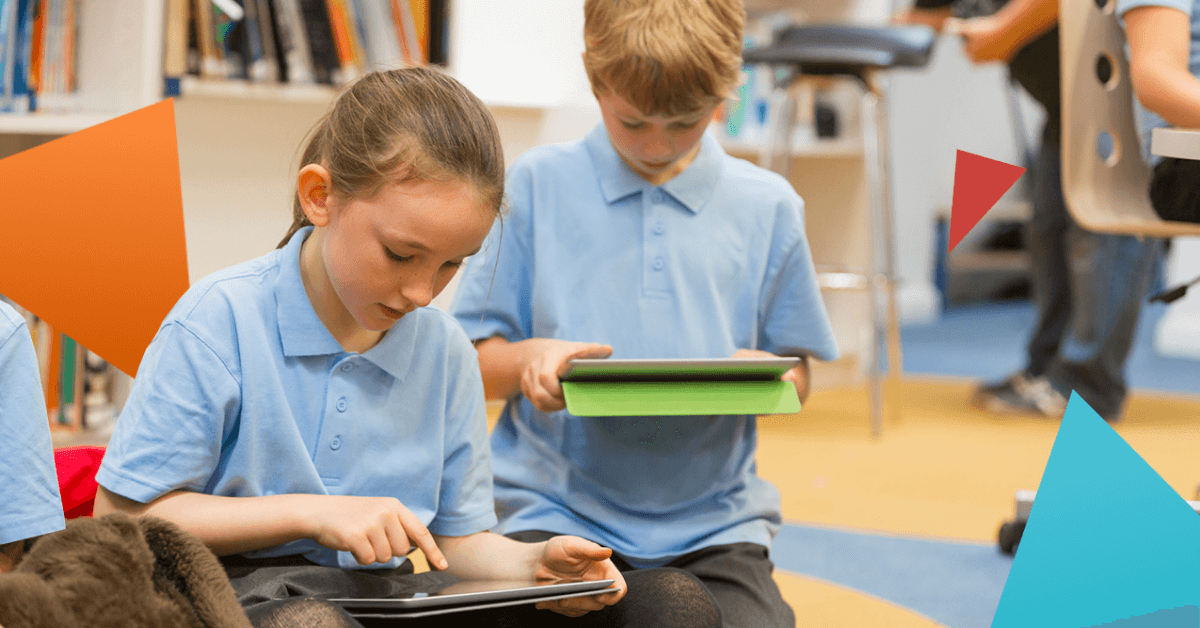Published on April 17th, 2025
Inclusive Education: Using Interactive Displays to Support Sign Language in the Classroom
15 minute read

Summary
The question of how technology can be used to support inclusive learning and, specifically, to help overcome the challenges faced by d/Deaf and hard-of-hearing learners in the classroom is not a new one. Since the widespread adoption of interactive displays into learning environments, there has been a recognition that the technology can help to create a more inclusive learning environment and improve productivity among users of sign language simply by enhancing the amount of visual information in the room.
Only in recent years, however, has the discourse begun to shift towards how the inclusion of sign language within the classroom – and more inclusive learning strategies in general – can offer benefits to all learners, and not just those who are d/Deaf or hard-of-hearing.
British Sign Language in the Classroom
The integration of British Sign Language (BSL) within the classroom is indispensable for the equitable development and education of d/Deaf and hard-of-hearing learners.
A recent study demonstrated the vital role that sign language plays within d/Deaf children’s education. The review of 70 studies identified similar competencies between sign language and spoken and written languages. These included phonological awareness, fingerspelling, lexico-semantic knowledge, grammatical knowledge, sign language comprehension, sign language production, and general proficiency.
Researcher Professor Zhang draws a parallel between the role that children’s home languages play in enabling them to learn to read and write and the comparable role that BSL plays for d/Deaf learners. This suggests that an English-only approach is not sufficient for the equitable education of d/Deaf learners and underscores the importance of including BSL within the classroom for the academic, emotional, and linguistic development of BSL users.
Deaf educator Sarah Lawrence describes British Sign Language (BSL) as “a visual language that promotes confidence and growth” and is an advocate for its inclusion in the wider curriculum. She reports seeing “quiet, withdrawn people become far more confident and outgoing through studying BSL.”
In fact, the benefits of integrated, inclusive learning environments for both disabled and non-disabled students have long been recognised. Studies have found that an inclusive approach can improve both academic performances, as well as soft skills, such as communication, empathy, and self-expression. Further research has shown that learning BSL has been proven to enhance memory, concentration, and problem-solving skills – there’s even speculation that it may slow the progression of dementia. Cognitive advantages aside, it also provides a gateway to understanding and celebrating d/Deaf culture, nurturing empathy, and promoting a more inclusive society.
It therefore follows that the introduction of sign language into the classroom – as well as strategies for improving auditory inclusivity – should be explored thoroughly while supporting its application with digital tools and assistive technology.
The Landscape of BSL in British Schools
The attainment gap between d/Deaf children and their non-deaf counterparts is staggering. Analysis shows that in 2021, 37.7% of d/Deaf children achieved a grade 5 at GCSE in Maths and English compared to 51.9% of all children. This marked the seventh year running that, on average, d/Deaf students achieved an entire grade less at GCSE than non-deaf learners.
The National Deaf Children’s Society says young people are being failed by the education system, and it has been lobbying the UK government for better support for d/Deaf children.
The tide seems to be changing, and in 2024, the UK government announced a £740 million support package for pupils with special education needs and disabilities (SEND). The fund can be used to adapt classrooms to be more accessible for children with SEND and to invest in specialist technologies and facilities to offer tailored support.
Using Technology to Support Inclusive Learning
The transformative role that assistive technology can play in inclusive education has long been recognised. Technology can help us remove or overcome barriers to learning by offering alternative formats, anonymised contributions, or simply by changing the layout of the classroom to make it more physically accessible.
Screen readers, for example, are a ubiquitous example of how technology can be used to support learners with visual impairments. They convert text-based learning resources (such as eBooks, worksheets, or instructional documents) into speech, creating a more equitable learning environment. Elsewhere, literacy software has been produced to support learners with dyslexia. These offer a range of solutions such as text-to-speech functionality or speech-to-text transcription, text presentation controls (such as being able to change the font size or background colour, which has been shown to help dyslexic learners), or screen masks and rulers to reduce distractions and improve focus.
Elsewhere, apps for interactive whiteboards such as Kahoot! or Mentimeter which can be used with Promethean’s interactive panels, offer anonymised participation in classroom activities. There are many reasons why a student may not feel comfortable actively participating in class discussions – such as social anxiety or overwhelm by sensory stimuli – and these tools help to remove such barriers, enabling participation in a manner that is more comfortable for these learners.
How Interactive Displays Can Support BSL Users
Interactive displays can provide a range of advantages for all learners and a variety of different learning styles, and they have also been shown to support collaborative learning. However, there are several features that make them particularly useful assistive tools for teaching those who are d/Deaf or hard-of-hearing.
Sensory Learning
Multisensory learning is important for supporting those with different learning styles and is essential in creating an equitable classroom environment. However, this provision is particularly important when we have learners with an impaired sense such as hearing. Incorporating an interactive display into your teaching gives a visual focal point for d/Deaf and hard-of-hearing students, which can help to support traditional auditory teaching methods, such as classroom discussions. Applications such as the Annotate App allow teachers to highlight or make notes on teaching resources – an emphasis that might traditionally be communicated verbally – or even allow learners to apply their own annotations directly.
Real-Time Translation
Speech-to-text applications offer real-time translation of auditory information into visual data. When used with an interactive display, this allows lectures, conversations, and other audio resources to be transcribed into text to ensure that d/Deaf and hard-of-hearing – or even just primarily auditory learners – can keep up with the pace in the classroom without losing time to processing or missing information entirely.
Recorded Resources
Interactive displays can be used to record classroom presentations for future prosperity. This allows any resources (such as PowerPoint presentations) to be presented visually alongside a recording of the presenter. Many recording applications also offer a transcription feature, making them a great visual learning tool. This allows learners – particularly those who may be hard of hearing – to revisit classroom resources and discussions and process them in their own time.
Visual BSL Learning Resources
When it comes to teaching BSL in your classroom – something which can greatly improve the confidence and sense of belonging of users of BSL – an interactive display can be indispensable. It allows you to incorporate videos, images, and diagrams into your lessons. Having the visual information displayed on the screen gives you the freedom to offer extra one-on-one support to learners in your classroom without, you needing to be at the front of the class throughout the lesson to provide the visual information yourself.
Helping d/Deaf Learners Overcome Classroom Challenges
Many of the obstacles that d/Deaf and hard-of-hearing learners face in the classroom can be cultural or rooted in behavioural norms. Alongside the implementation of assistive technologies, there are several smaller changes you can make in your lessons to help learners with hearing impairments feel more included.
Limit Background Noise
Consider the impact that any background noise – such as music – might have on learners who are reliant upon auditory cues. Too many audio sources can make it difficult for them to concentrate on key information. Try to reduce the amount of chatter in your classroom where possible and make other students aware of the impact this can have on others.
Ensure Clear Lines of Sight
Always face your students when speaking. This will allow anyone in your class who is reliant upon lipreading to keep abreast of the conversation. If you take input from the class or ask them to answer questions, repeat the responses to ensure that they can be understood by d/Deaf students who may not have a line of sight to the contributor. Finally, make sure that d/Deaf or hard-of-hearing students are sitting somewhere where they have an unobstructed view of any learning resources, whether that’s yourself, an interactive display, or any models or demonstrations.
Written Instructions
Providing any salient announcements or guidance in writing is generally good practice as it reduces the likelihood of misunderstandings, but it’s particularly important when you have learners in your class who are more reliant upon visual information. Providing important updates in both verbal and written formats will help visual learners feel included and reduce the chance of them missing out on essential information.
Video Captions
This one is relatively easy, as most video players have an option to display captions. If you’re playing a video to the class, always make sure you have captions switched on – if your video doesn’t have captions, choose an alternative one that does. It’s also good practice to turn the volume up. Just check in with your learners to make sure that it’s a comfortable level for everyone.
Future Trends in Accessible Education Technology
The future of accessible education is likely to see the increasing integration of artificial intelligence as we continue to develop generative technologies.
On the immediate horizon is the continued enhancement of real-time captioning software, translating speech into text with greater accuracy and speed. Many of the major tech companies are already investing heavily in this area, and the result will likely see real-time translation of both conversations in the classroom, as well as digital resources, such as online lessons or audio and video resources.
In the medium term, the continued development of translation software is likely to have the most profound effect on d/Deaf and hard-of-hearing learners, translating sign language into speech and vice versa. The effect of this is likely to be transformative upon learners with auditory impairments, making communication between d/Deaf learners and non-deaf learners and educators almost seamless. The culmination of this is likely to reside within wearable hardware customised to the needs and preferences of everyone. Already there are several prototypes being developed for glasses that translate speech into text.
Moving forward, we need to be careful not to let these technologies undermine the cultural bridges we have been building between the communities. There is still a place for teaching BSL as part of the curriculum, as it offers cultural insights and empathetic relationships that translation technologies will initially struggle to fulfill – not to mention the benefits that learning BSL brings in terms of developing cognitive and motor skills for all learners.
Deaf Education: How Promethean Can Help
When it comes to inclusive education and accessible teaching technologies, Promethean’s solutions are poised to support both the inclusion of BSL within the curriculum and the adoption of assistive technologies for a diverse range of users. Our interactive displays can help you level the playing field and move towards a more equitable teaching environment, helping to build a sense of belonging for disabled learners and support their academic and social development.
Contact Promethean for a free demo today.
Related articles:










